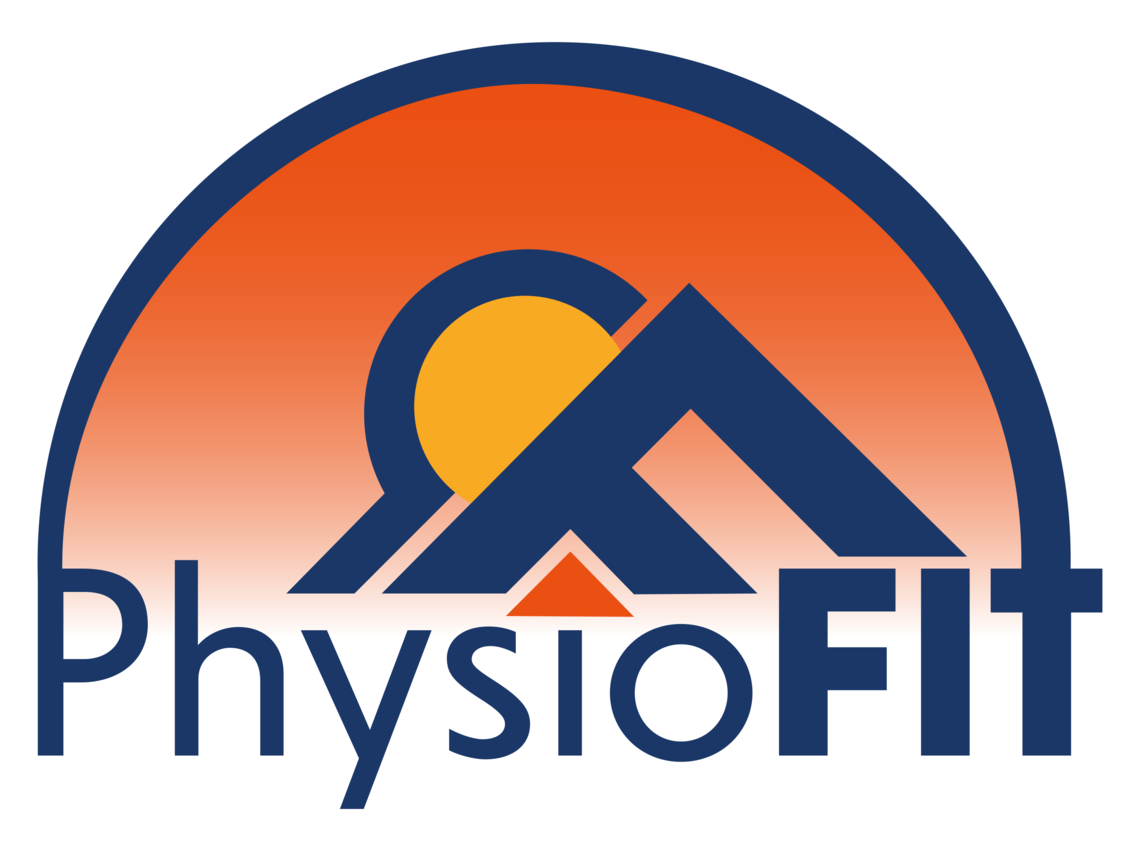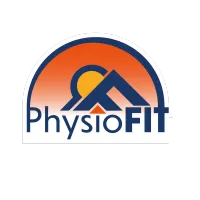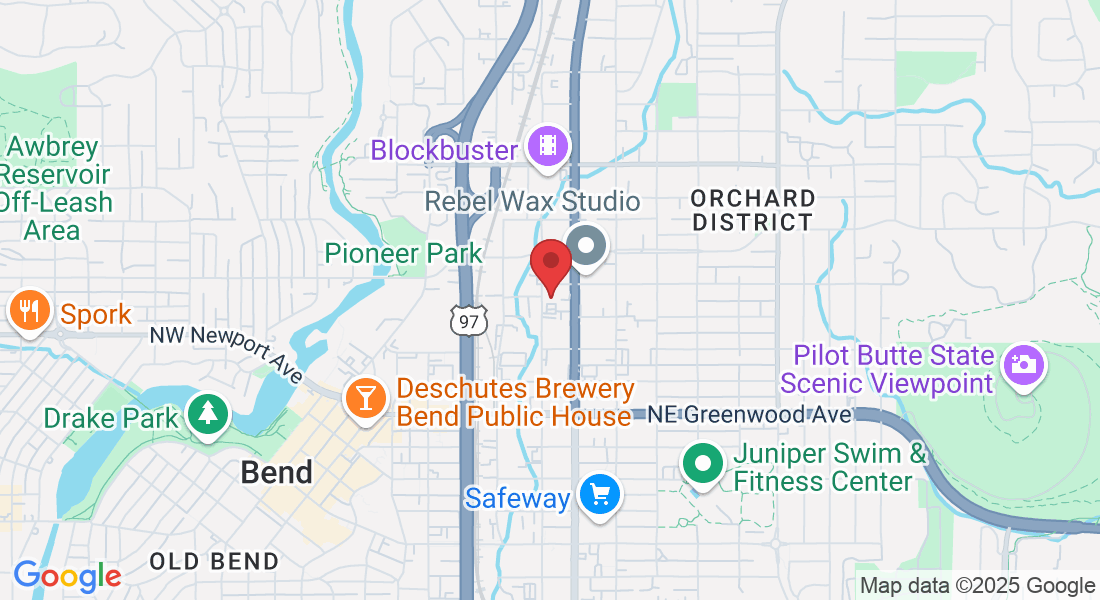TMJ Relief
Unlock Relief From TMJ Pain
If you're struggling with discomfort and dysfunction in your jaw, you've come to the right place. Temporomandibular joint (TMJ) disorders, or TMD, as they are also known, can severely impact the quality of your life, leading to significant jaw pain, headaches, and hindrances in performing simple tasks like opening and closing your mouth. By diving deeper into understanding the complexities of TMJ disorders, we're equipped to provide innovative and tailored physical therapy solutions for effective TMJ pain relief.
Experience TMJ Relief like Never Before with PhysioFit: We take a deeply personalized approach to your health, comprehending that every TMJ pain sufferer requires a unique treatment plan. Leveraging the power of evidence-based, fitness-driven physical therapy in bend, we strive to offer more than temporary relief. We aspire to improve your overall well-being, stave off persistent pain and accelorate your recovery process, allowing you to effortlessly resume your normal life.
What You Should Know
Healthcare providers classify TMDs into three categories:
Disorders of Your Jaw Joints: These involve complications in the jaw joints themselves, often manifesting as clicking, popping, or grating sounds during jaw movement.
Disorders of Your Chewing Muscles: This category includes issues related to the muscles responsible for chewing, where patients may experience persistent or intermittent muscle pain.
Headaches That Result From TMD: A significant fraction of TMD sufferers may experience headaches or migraines as a consequence of jaw joint or muscle dysfunction, significantly affecting their quality of life.
A proper diagnosis of a TMJ or TMD problem involves a thorough evaluation from a professional.

Some of The Most Common Causes of TMJ Pain
The onset of TMD isn't attributed to one solitary cause. Instead, it tends to emerge from a diverse array of factors, often in combination.
Jaw injury: Injuries such as a broken or dislocated jaw can directly affect the temporomandibular joint, leading to TMJ disorders. Such physical trauma can disrupt the alignment and smooth functioning of the jaw joint, inducing pain and discomfort.
Teeth Grinding or Clenching (bruxism): Frequent teeth grinding or clenching, often a subconscious habit during sleep or periods of stress, can exert excessive pressure on the TMJ, contributing to its dysfunction. Over time, this can lead to wear and tear, causing persistent pain and other TMJ-related symptoms.
Arthritis in Your Jaw Joint: Arthritis, an inflammatory condition, can affect any joint in your body, including the TMJ. The inflammation and degeneration associated with arthritis can cause joint pain and stiffness, impairing normal jaw movement.
Malocclusion: Malocclusion refers to the misalignment of teeth when the jaws are closed, which can put additional strain on the TMJ. This imbalance can force the jaw joint to work harder to achieve efficient biting and chewing, increasing the risk of TMJ disorders.
Stress: High levels of stress can lead to physical manifestations such as increased muscle tension or clenching of teeth, both of which can place undue strain on the TMJ. Chronic stress can exacerbate these physical responses, thereby contributing to TMJ pain and dysfunction over time.
If any of this information resonates with your current situation, we urge you to schedule an appointment with us immediately. Don't let hip pain diminish your life quality - allow us to help you embark on the path to relief today.
Can I Prevent TMD or TMJ Pain?
While it's true that certain risk factors contributing to TMJ dysfunction are beyond our control, there are still practical steps you can take to minimize the likelihood of developing this condition:
Make Use of a Mouth Guard During Sleep: Nighttime teeth clenching or grinding, known as bruxism, can significantly contribute to TMJ dysfunction. By wearing a mouth guard as you sleep, you can effectively mitigate this risk, protecting your jaw joints from undue pressure.
Ensure You're Protected in High-Risk Situations: When participating in contact sports, your facial area is more susceptible to injuries. Utilizing a mouth guard during such activities can offer invaluable protection for your jaw, reducing the risk of TMD.
Prioritize Maintaining Good Posture: The alignment of your neck and head plays a vital role in the functioning of your jaw. By ensuring good posture, you can maintain optimal alignment, thereby reducing strain on your TMJ.
Embrace Stress Reduction Practices: Stress can lead to unconscious habits such as jaw clenching, which can exacerbate or lead to TMD. Techniques such as meditation or mindfulness exercises can help manage your stress levels, offering indirect yet essential protection against TMJ dysfunction.
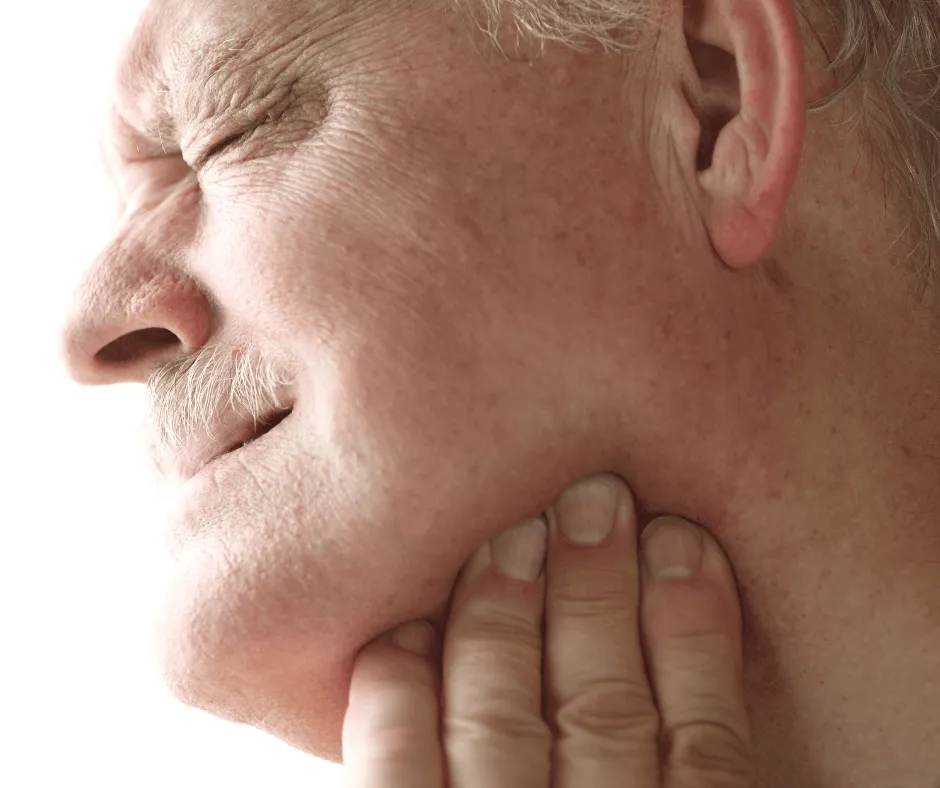
Common Symptoms of TMJ Pain
Jaw Tightening or Stiffness
Jaw Pain
Jaw Clicking or Popping
Trouble Closing or Opening Your Mouth.
Headaches or Migraines
Earaches or Toothaches
Ringing in Your Ears (tinnitus)
Teeth Fitting Together Differently (malocclusion)
Remember, if you resonate with any of the symptoms or conditions mentioned, we highly recommend making an appointment with us for a thorough evaluation and personalized treatment plan.
Please Note: The information provided on our website is intended for general education and is not a substitute for professional medical advice. Each individual's situation and body is different. Therefore, what may work for one person may not work for another. We care about your well-being and advise you to reach out to us to discuss your specific needs before implementing any advice from our website.
Your Source for All Things Physical Therapy in Bend Oregon
The PhysioBlog
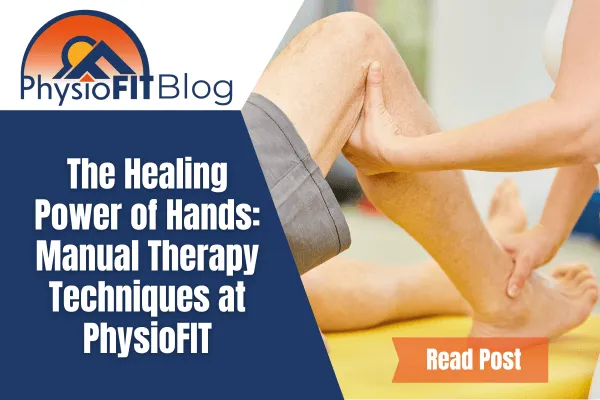
The Healing Power of Hands: Manual Therapy Techniques at PhysioFIT
Please Note: The information provided on our website is intended for general education and is not a substitute for professional medical advice. Each individual's situation and body are different. Therefore, what may work for one person may not work for another. We care about your well-being and advise you to reach out to us to discuss your specific needs before implementing any advice from our website. If you’d like to explore this more or would like to schedule a time with a physical therapist in Bend Oregon, contact us at PhysioFITBend.com
Introduction
Manual therapy is a key component of PhysioFIT's treatment approach, encompassing a range of specialized techniques to address musculoskeletal issues. This article explores the various manual therapy techniques used by PhysioFIT and other physical therapy professionals and how they can be integrated into treatment plans.
PhysioFIT incorporates a variety of manual therapy techniques, such as joint mobilizations, soft tissue mobilizations, and muscle energy techniques. These hands-on methods are aimed at restoring joint mobility, reducing pain, and improving overall function. By employing precise movements and pressures, manual therapy can target specific areas of the body to alleviate discomfort and promote healing.
In addition to these commonly used techniques, PhysioFIT also utilizes more specialized manual therapy approaches, including myofascial release and trigger point therapy. These techniques focus on releasing tension and addressing specific muscular imbalances that may be contributing to pain or dysfunction. By targeting trigger points and areas of restricted fascia, these techniques can provide significant relief and restore proper muscle function.
One unique aspect of PhysioFIT's manual therapy approach is their emphasis on individualized treatment plans. Each patient's therapy is tailored to their specific needs and goals, ensuring optimal outcomes. This personalized approach allows us to tailor your manual therapy techniques to address the underlying cause of the patient's condition, rather than just treating the symptoms.
Joint mobilization
Joint mobilization is a therapeutic technique used to improve joint movement and function. PhysioFIT incorporates various methods that promote joint mobilization, such as manual therapy techniques that focus on gentle and controlled movements. These techniques aim to reduce pain, increase joint flexibility, and enhance overall joint health. By applying specific forces to the joint, joint mobilization aids in restoring proper alignment and promoting tissue healing. This approach is particularly effective for individuals with restricted joint motion or conditions such as arthritis. Additionally, incorporating joint mobilization techniques into a comprehensive treatment plan can lead to improved mobility and quality of life for patients.
In the context of joint mobilization, it’s important to note that a thorough assessment is essential to determine the most appropriate technique for each individual. Factors such as the patient's age, level of joint dysfunction, and overall health should be considered when selecting the most suitable approach. The physiotherapist will apply gentle and precise pressure to the joint, targeting specific areas to achieve the desired outcome. This technique requires specialized training and expertise to ensure safety and effectiveness.
One unique aspect of joint mobilization is its ability to not only target the joint itself but also the surrounding soft tissues. By incorporating mobilization techniques that address both the joint and surrounding muscles, ligaments, and tendons, a comprehensive approach to rehabilitation can be achieved. This approach aims to restore proper balance, stability, and function to the entire joint complex.
Soft tissue mobilization
Soft tissue manipulation is a technique used in manual therapy to mobilize and manipulate soft tissues, such as muscles, tendons, and fascia, to improve mobility and reduce pain. PhysioFIT incorporates various soft tissue mobilization techniques to help clients recover from injuries and improve their overall musculoskeletal health. These techniques may include deep tissue massage, myofascial release, and instrument-assisted soft tissue mobilization.
By targeting specific areas of dysfunction and tension, soft tissue mobilization can help alleviate pain, improve range of motion, and enhance tissue healing. Regular sessions of soft tissue mobilization can be beneficial for athletes, individuals with chronic pain conditions, and those recovering from surgery or injury.
Strain-Counterstrain Therapy
Strain-counterstrain therapy, a popular manual therapy technique used at PhysioFIT, involves the passive positioning of a patient to relieve pain and tension. This method differs from others as it aims to soften and reset targeted muscles and joints, promoting healing and optimizing function.
By applying gentle pressure to specific tender points and then passively moving the patient, strain-counterstrain therapy allows the body to reset muscle tension and decrease pain. This technique works by activating the proprioceptive system, which helps the body recognize and correct imbalances, promoting a healthier musculoskeletal system.
What sets strain-counterstrain therapy apart is its focus on finding tender points throughout the body, including muscles, tendons, and ligaments. This method aims to address restrictions and imbalances at their source, providing targeted relief and improved range of motion.
Incorporating strain-counterstrain therapy into your treatment plan can bring several benefits. Firstly, it helps to relax and release tense muscles, promoting pain relief and improved function. Additionally, this technique can enhance joint mobility and stability, reducing the risk of future injuries. By improving the body's proprioceptive system, strain-counterstrain therapy provides long-term benefits and helps patients achieve optimal physical well-being.
Myofascial release
Myofascial therapy is a specialized technique used by physiotherapists to address myofascial restrictions and promote healing. PhysioFIT incorporates various approaches to myofascial release, such as deep tissue massage, trigger point therapy, and stretching exercises. These techniques aim to relieve pain and improve range of motion by targeting the fascia, a connective tissue that surrounds muscles and organs.
By applying sustained pressure and stretching to the affected area, myofascial therapy helps to release tension and restore proper function. PhysioFIT tailors each session to the individual's specific needs, ensuring a personalized approach to myofascial release. This therapy can be particularly beneficial for individuals with chronic pain, postural imbalances, or sports-related injuries.
In addition to the traditional hands-on techniques, PhysioFIT also incorporates advanced tools like foam rollers and myofascial release balls to enhance the effectiveness of myofascial therapy. These tools can provide targeted pressure to specific areas, allowing for self-treatment and maintenance between sessions.
Myofascial release has been proven to be an effective technique for pain management and rehabilitation. A study published in the Journal of Manipulative and Physiological Therapeutics found that myofascial release significantly improved pain and function in patients with chronic low back pain.
Instrument-Assisted Soft Tissue Mobilization
Instrument-assisted soft tissue mobilization (IASTM) is a technique used by physiotherapists to treat various musculoskeletal conditions. Here are 5 key points about IASTM:
IASTM involves using specially designed instruments to detect and treat areas of soft tissue dysfunction.
It helps to break down adhesions, scar tissue, and fascial restrictions in the muscles and soft tissues.
By applying controlled pressure and friction, IASTM promotes the healing process and improves blood circulation.
IASTM can be used to alleviate pain, increase range of motion, and restore joint function.
This technique is often combined with other manual therapy techniques and exercises for optimal results.
One unique aspect of IASTM is its ability to target specific areas of soft tissue dysfunction, allowing for precise treatment. It is a non-invasive approach that can be effective in reducing pain and improving functional outcomes.
Active Release Techniques
Active Release Techniques (ART) are a set of manual therapy techniques used by physiotherapists to treat soft tissue injuries and muscle imbalances. These techniques involve the skilled manipulation and release of tight and tender muscles, tendons, ligaments, and fascia.
ART involves the practitioner using their hands to apply targeted pressure on specific areas of the body, while the patient actively moves the affected joint or muscle through a range of motion.
By combining precise tension and movement, ART helps to break down scar tissue, release adhesions, and restore normal function to the soft tissues.
ART has been shown to be effective in reducing pain, improving flexibility and mobility, and enhancing athletic performance.
ART is a valuable addition to physiotherapy because it not only treats the symptoms but also addresses the underlying cause of the injury. By targeting specific areas of dysfunction, ART helps to restore proper muscle balance, improve joint mechanics, and optimize movement patterns. This holistic approach ensures long-lasting results and reduces the risk of future injuries.
Conclusion
Physical therapy techniques are an essential part of manual therapy practiced at PhysioFIT. These techniques are explored and incorporated effectively to ensure optimal outcomes for patients. By using a variety of manual therapy techniques, such as joint mobilization, soft tissue mobilization, and muscle energy techniques, PhysioFIT aims to provide comprehensive and personalized care to address individual needs and promote recovery. Implementing evidence-based practices and staying up-to-date with the latest research in manual therapy allows PhysioFIT to deliver high-quality treatment and better outcomes for their patients. The focus on incorporating different manual therapy techniques sets PhysioFIT apart and enables them to provide a holistic approach to rehabilitation and physical well-being.
In addition to their comprehensive approach to manual therapy, PhysioFIT also emphasizes the importance of patient education and empowerment. By educating patients about their condition and the benefits of manual therapy, they can actively participate in their treatment and recovery process. This patient-centered approach not only helps patients achieve better outcomes but also enables them to take control of their health and well-being in the long term.
To experience the benefits of PhysioFIT's comprehensive manual therapy, schedule an appointment today. Don't miss out on the opportunity to enhance your well-being and successfully recover from injury or health condition. Your journey towards optimal physical health begins with PhysioFIT.
FAQ
What is manual therapy?
Manual therapy is a type of physical therapy where a therapist applies pressure on bones and soft tissues to relieve tension, decrease pain, and mobilize joints and muscles. It can also help restore function in certain body parts after an injury. Some techniques involve the use of hands, while others use instruments.
What are the benefits of manual therapy?
Manual therapy techniques have several benefits, including relieving tension, decreasing pain, improving joint mobility, increasing range of motion, reducing inflammation, improving flexibility, and restoring mobility in joints that have lost it. It can also be effective in treating conditions like golfer's elbow, tendinitis, back pain, and sciatica.
What is joint mobilization?
Joint mobilization is a manual therapy technique where a therapist manually applies pressure to a joint to improve its mobility and range of motion. It is beneficial for patients experiencing stiffness or pain in their joints, such as those with golfer's elbow or tendinitis in their shoulder.
What is soft tissue mobilization?
Soft tissue mobilization is a manual therapy technique where a therapist stretches and applies pressure to muscles and ligaments. This technique breaks up muscle tissue, relieving tension and reducing inflammation. It also helps improve flexibility and restore mobility in joints.
What is strain-counterstrain therapy?
Strain-counterstrain therapy, also known as positional release therapy, is a gentle technique where a therapist holds your body in specific positions for intervals of 90 seconds. This therapy allows the sensory receptors within the muscles to relax in a comfortable and natural position, effectively relieving tension in the muscles.
What is myofascial release?
Myofascial release therapy is a manual therapy technique that targets the fascia, the thick tissue that coats bones and muscles in our body. The therapist manually manipulates stiff or tight spots in the fascia to restore pliability, relieving pressure on the joints and muscles. It is commonly used to treat back pain, sciatica, and other forms of chronic pain.
Please Note: It's important to note that any exercises or techniques that are shared should be performed under the guidance of a qualified bend physical therapy expert to ensure correct technique and to prevent injuries. A physical therapist can provide a customized exercise program based on the individual's fitness level, goals, and any existing injuries or conditions. If you’d like to explore this more or would like to schedule a time with a physical therapist in Bend Oregon, contact us atPhysioFITBend.com
Copyright PhysioFIT 2025 . All rights reserved
